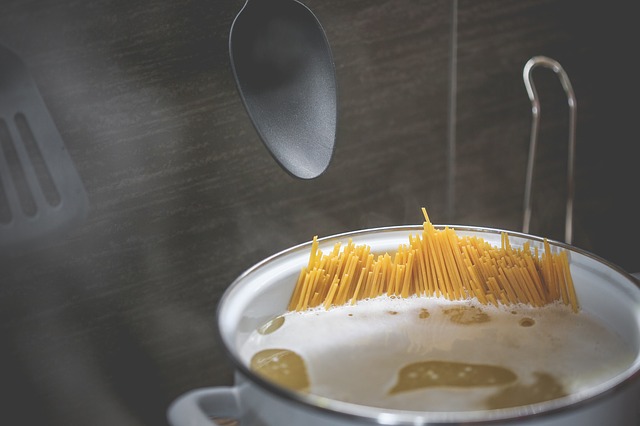Who doesn’t like a few clever tips and tricks in their back pocket when cooking, especially when you are trying to save a few dollars, cut back on waste and still put a delicious dinner on the table for your family? I’ve used these tips in my kitchen for years and have often thought I should share these, so here you go!
Save the Pasta Water
When the pasta is done cooking, don’t throw out the cooking water right away. Drain the pasta in a colander over a bowl or cup. You won’t use it all so don’t worry about trying to save it all. Warm, salty and starchy pasta water is perfect for loosening up homemade mac and cheese or even if you cheat now and again, like I do, and make a box mix. Mac and cheese will often tighten up if you don’t serve it right after it’s mixed. If this happens, mix in a ¼ – 1/3 cup of pasta water in it. It’ll loosen up and be nice and creamy for the table. You can also use pasta water to thin out homemade Alfredo sauce or any kind of sauce made from a roux – flower, butter and milk. It adds flavor and seasoning so go light on the salt after adding it to your favorite sauces.
Let the Batter Rest
Most batters that include baking powder will rise better when cooked or baked if you let it sit for a few minutes before putting in in the skillet or in the baking pan. For example, my crew loves pancakes and in particular pancakes with something in them like bananas or blueberries. After I mix the pancake batter, I let it rest a few minutes before scooping it on the hot skillet. I’m only talking about a 2-3-minute nap. But, much like ourselves, a little cat nap makes all the difference! After resting, the pancakes will rise higher and be lighter and fluffier as well. Same trick works for cornbread, muffins, waffles, and souffles.
Chill the Beef
Often when cooking beef, you want it to be at room temperature before cooking it, like with a beautiful rib eye steak or a pot roast you want to sear before slow cooking. But, if you are cutting beef for a soup, stew or stir-fry, let it get a good chill first. It will cut so much easier for you and if you are slow cooking it, it’ll be even more tender. This is a two-for-one tip as well. Don’t let the package label stop you! I recently was planning a beef stew. The price on chuck roast that I could cut myself and stew meat that was already cut was too much for my budget that week, but stir-fry beef was a great price. It was already in long, thin pieces. All I had to do was cut those pieces into half or thirds, perfect for my stew. If you are slow cooking a meat, the cut isn’t as important as if you were grilling, sautéing or stir-frying it.




